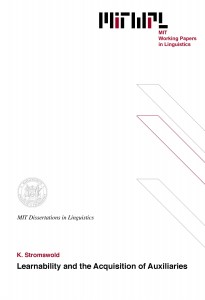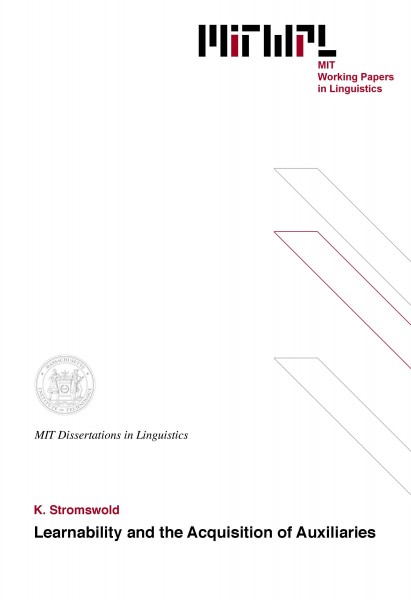Learnability and the Acquisition of Auxiliaries
K. Stromswold, 1990
This thesis examines how children acquire the English auxiliary system. The behavior of auxiliaries is extremely intricate and, at times, seemingly arbitrary. Therefore, auxiliaries pose a number of difficult learning problems for the child. Perhaps, the most difficult is how the child distinguishes between auxiliaries and their homophonous main verb counterparts. Before the child has mastered the grammar of English, how does the child distinguish auxiliary be, do, and have from main verb be, do, and have? How does the child master the grammar, if she has yet to distinguish auxiliary be, do and have from main verb be, do and have?
Spontaneous speech transcripts containing over 50,000 uses of auxiliaries or homophonous main verbs and over 40,000 questions were analyzed to determine how children acquire the auxiliary system. In addition, two judgment experiments were conducted in which children judged the grammaticality of sentences with inversion errors and tensing errors. The result of these analyses and experiments suggest that from a very early age children distinguish auxiliaries from main verbs and treat the two kinds of verbs differently. They apply a productive learning strategy with main verbs and a fairly conservative strategy for dealing with auxiliaries, they make very few off the many types of auxiliary errors that could potentially be made. What errors they do make seem to involve inversion and do-support. From a linguistic standpoint and a learnability standpoint, children’s problems with subject-auxiliary inversion and do-support are quite understandable.
Table of Contents
Chapter 1 Introduction 11
Chapter 2 Linguistic and Learnability Issues of Auxiliaries 22
Chapter 3 Auxiliary Errors in Spontaneous Speech 43
Chapter 4 First Uses of Auxiliaries and their Homophonous Main Verb
Counterparts 78
Chapter 5 Subject-Auxiliary Inversion 109
Chapter 6 Tense and Auxiliaries: Difficulties with Do-support 216
Chapter 7 Conclusion 260

